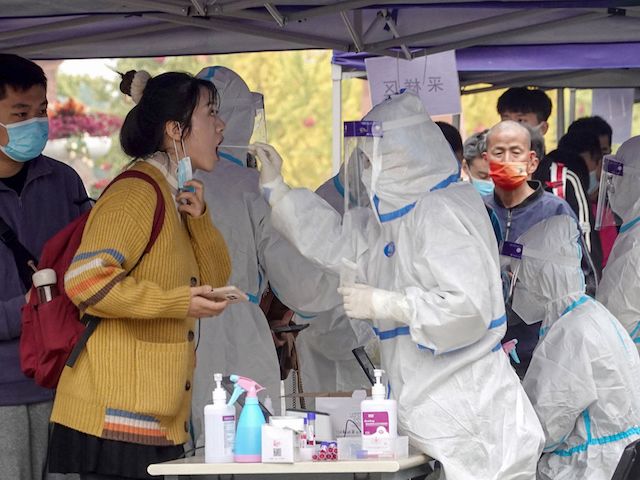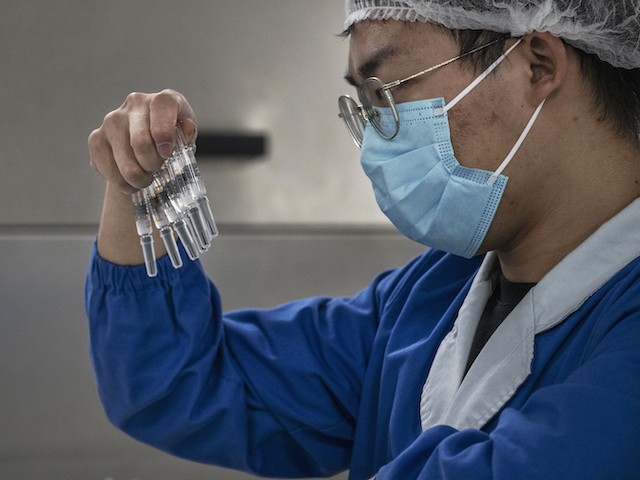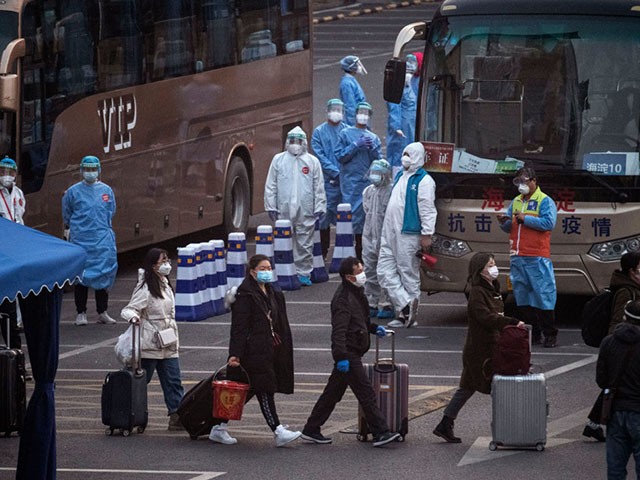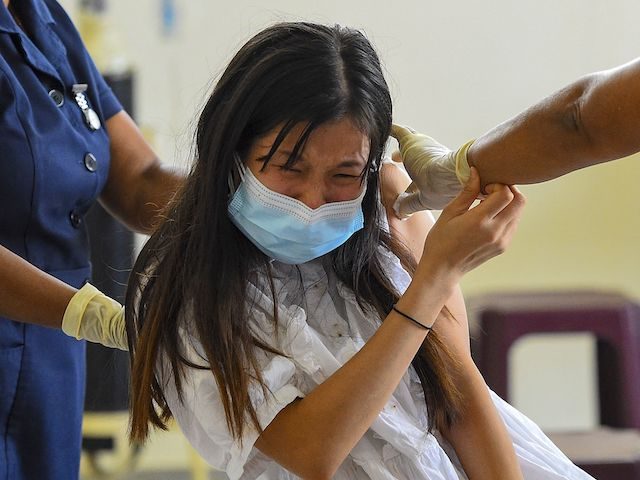At least 19 Chinese provinces and municipalities are offering booster shots of coronavirus vaccines to combat a recent resurgence of China’s coronavirus caseload nationwide, the state-run Global Times reported Tuesday.
China’s state council, or chief administrative authority, ordered at least three districts in Beijing — Tongzhou, Chaoyang, and Dongcheng — to begin offering coronavirus vaccine booster shots to residents aged 18 years and older beginning October 19.
“Before Beijing, at least 18 provincial-level regions had started to offer booster shots, including Northeast China’s Heilongjiang, Central China’s Hubei, and South China’s Guangxi,” according to the Global Times.
The Global Times published an additional article on October 19 indicating that Chinese health authorities are administering additional doses of the state-made Chinese coronavirus vaccine “CoronaVac” by Sinovac Biotech, as booster shots.
Sinovac, a Chinese state-run biopharmaceutical company that produces the CoronaVac vaccine, recently “confirmed the necessity of the booster shot,” the newspaper reported.

A resident undergoes a nucleic acid test for the coronavirus in Xian in China’s northern Shaanxi province on October 20, 2021. (STR/AFP via Getty Images)
Citing “the latest real-world observation data” for Sinovac-CoronaVac recorded in Chile – a nation that experienced a surge in coronavirus cases after using Chinese immunization products – the Global Times claimed that a “third shot of the CoronaVac inactivated COVID-19 [Chinese coronavirus] vaccine developed by Sinovac can clearly increase the strength of protection.”
“Specifically, increased effectiveness against COVID-19 [Chinese coronavirus] 14 days after the booster shot can reach 80.2 percent, up from 56 percent, while increasing the effectiveness against hospitalization by 88 percent, up from 84 percent,” according to the report.
The World Health Organization (W.H.O.) granted Sinovac-CoronaVac emergency use approval on June 1 despite the vaccine’s low efficacy rate of 51 percent. Vaccines typically have to reach a 50-percent threshold efficacy to qualify as functional.
“[T]he launch of booster shots nationwide is aimed at curbing the latest flare-ups in China, in which 26 domestically transmitted COVID-19 [Chinese coronavirus] cases have been reported as of Tuesday in seven provincial-level regions in the past three days,” the Global Times reported on October 19.

A worker checks syringes of the potential vaccine CoronaVac on the production line at Sinovac Biotech where the company is producing their potential COVID-19 vaccine CoronaVac on September 24, 2020, during a media tour in Beijing, China. (Kevin Frayer/Getty Images)
Beijing has blamed the coronavirus surge on a tourist group that visited China’s Inner Mongolia Autonomous Region in recent days. A separate report by the Global Times on October 19 revealed the tourist group consisted mainly of senior citizens from Shanghai. The travelers “crisscrossed provincial regions in China’s north and northwest … [and] likely came into contact with the virus which may have arrived through port cities in Inner Mongolia Autonomous Region, although where exactly it came from and how it came into China is unknown,” according to the newspaper, which is an official mouthpiece for China’s ruling Communist Party.
The group’s outbreak has spawned at least 26 known infections of the Chinese coronavirus across China so far.
Beijing on October 19 confirmed a locally transmitted case of the virus in a person who recently returned to the national capital from Northwest China’s Gansu Province. This case was subsequently “linked to the tour group that had spread the virus to seven provincial regions and cities as of Tuesday, including port cities in Inner Mongolia and [the] capital of Shaanxi Province [Xi’an],” the Global Times reported.
China’s coronavirus resurgence appears unusual at a time when most other countries worldwide – and most of the Western Pacific region it belongs to – are documenting case declines.

Chinese workers and health officials wear protective suits as they watch travelers from Hubei province, including Wuhan, as they gather to take buses while being processed and taken to do 14 days of quarantine, after arriving by train on April 10, 2020, in Beijing, China. (Kevin Frayer/Getty Images)
“With the exception of the European region, which for the third consecutive week reported an increase in new COVID-19 [Chinese coronavirus] cases (7 percent increase as compared with the previous week), all the other regions reported a decline,” the W.H.O. reported on October 20, citing data from October 11-17.
The U.N. health body also recorded a two-percent decline in coronavirus deaths worldwide compared to the previous seven-day period. Wednesday’s W.H.O. figures show that China’s regional neighbor, Southeast Asia, reported a 19-percent decrease in its coronavirus caseload from last week.

COMMENTS
Please let us know if you're having issues with commenting.